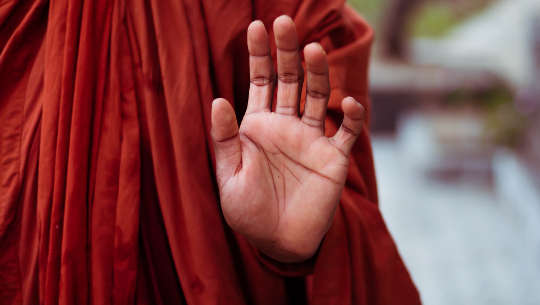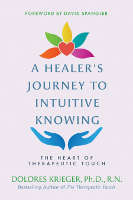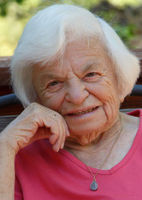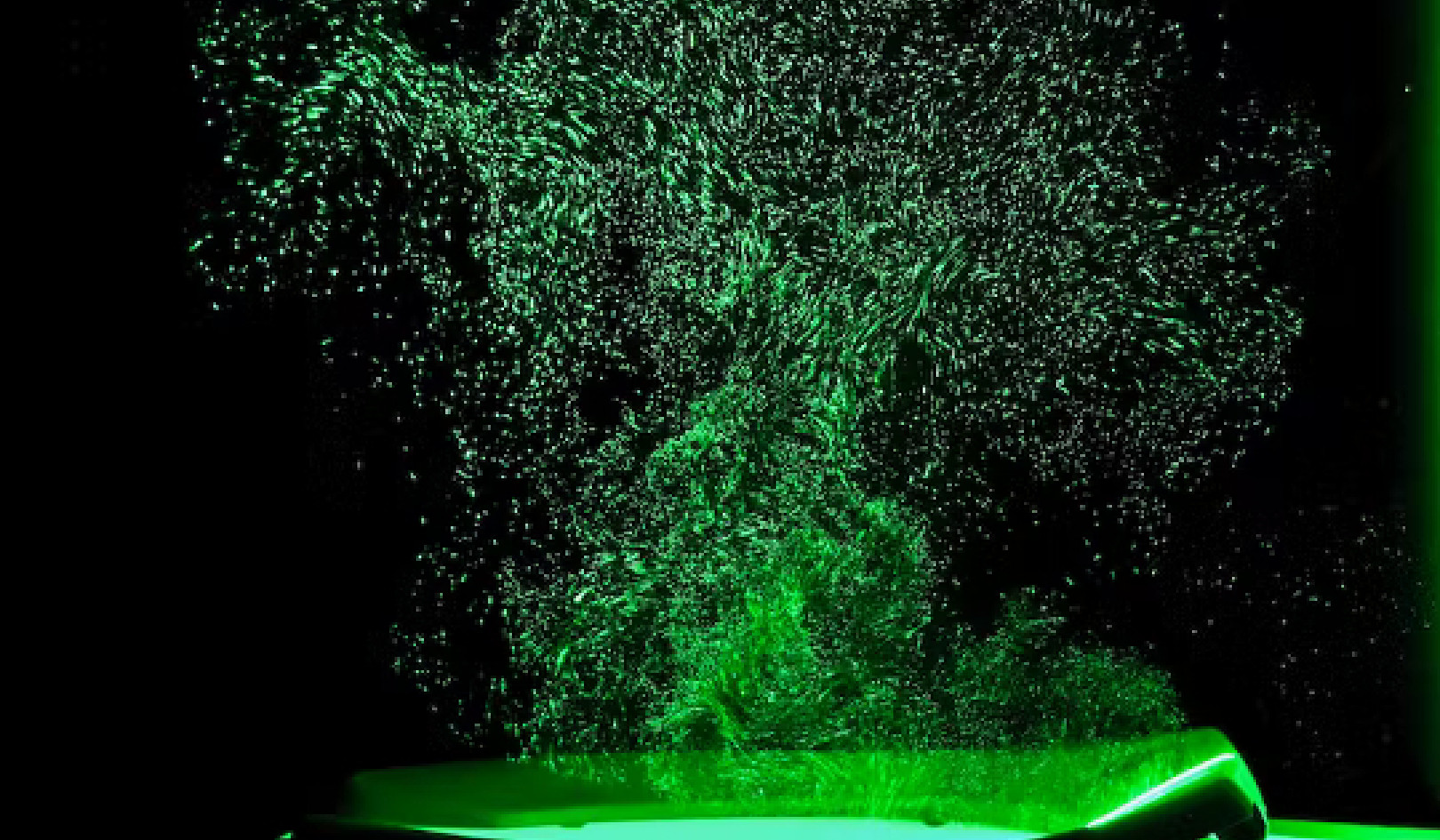
Image by Bhikku Amitha
Historically, healing has been one of humankind’s higher functions, leaving its mark recorded throughout more than 10,000 years of human civilization. Since these times, healing has been considered a spiritual practice. All of the major religions include healing as one of their expressions of spirituality, and so it should not come as a surprise that there are innumerable ways to practice healing.
Considering such a long list of healing practices, one wonders at the commonality among them. It is interesting that, although the practice of healing ways is older than civilization, no one has ever clearly defined the experience of the healer during that healing moment; it remains ineffable.
The entry point into the Therapeutic Touch process itself is a state of centered consciousness. Centering is taking a moment to find within a place of silence and stillness, setting aside one’s own troubles and concerns, to find an inner peace. This state is sustained throughout the entirety of the healing session, while the therapist simultaneously offers a variety of TT skills where appropriate. As one continues to practice Therapeutic Touch, it becomes evident that it is this sustained state of consciousness that nurtures and supports the empowerment of the therapist.
As one observes a Therapeutic Touch session, it is initially difficult to realize that an experience that appears to be so direct and simple could call out significantly advanced and complex shifts in consciousness in the therapist. However, it rapidly becomes obvious to the involved therapist herself that it is not as simple as it looks; in fact, its complexity is as deep as the therapist’s understanding will allow.
Fifty Years Ago: The Birth of "Therapeutic Touch"
At this writing, more than fifty years have passed since my colleague, Dora Kunz, and I began the development of Therapeutic Touch. Much of what our culture now takes for granted was not known then. At that time the act of healing and its rationale relied heavily on a religious frame of reference, and science could not find an adequate context for it.
Therapeutic Touch challenged religious traditions of healing by asserting its most basic assumption: healing is a natural human potential that can be actualized under appropriate conditions. This assumption declares that the healer is not a specially chosen person who is divinely anointed. Therapeutic Touch also challenged the scientific perspective, in that it “worked” even though we still do not clearly understand how subtle energies are transferred from healer to healee.
Under the best circumstances it was flashes of tested intuitions and thoughtful sensitization to inner promptings that helped us leap forward, even in the face of a more generally accepted logic that might point in another direction. However, our saving grace has been that we have always been willing to test notions before putting them forward. From the early days, we always emphasized to our students: take nothing on faith, but test out the ideas in your own Laboratory of the Self.
It was out of this amalgam that we developed our theories about the healing process, most of which we have had the opportunity to re-test over the years. If there was a handmaiden to witness the unusually rapid growth and development of Therapeutic Touch, it probably was clothed as an uncomplicated desire to help those in need. I think it was the persistent, driving force of that unswerving urge that energized our grasp of the reality of the transpersonal infrastructure of the Therapeutic Touch process. And, it is at the transpersonal level of the personality that the most potent work of the TT process may be glimpsed.
Additionally, from the beginning, the development of Therapeutic Touch was sponsored by universities, hospitals and health professions in the United States and later by TT therapists, community health agencies, and other institutions in a large number of the countries of the world. Having that academic and professional support in the background of Therapeutic Touch required that we develop the curriculum in a formal manner that spoke to the validity and reliability of the theoretical content. The theoretical content could then be tested and graded, and so over time it was established that Therapeutic Touch was not only teachable, but it was learnable. With the development of standards of practice and evaluation tools, Therapeutic Touch quickly became a pioneer in the formal entrance and acceptance of optional therapies into the arena of higher college education, as well as reaching out to adult education, life studies, and at-a-distance education.
The Evolution of Healing
How will healing evolve in the next decades and centuries of human history? It is indeed heartening to view the rise of MD’s who are adopting complementary medicine disciplines. Since the early days, when Dora and I were observing the acknowledged healers, much has changed in healthcare options.
Under the press of what has been called The New Enlightenment, we are beginning to realize that the problems that are forging our future are so incredibly complex that they need the minds of several people to envision their new calculus. We are in a unique time that permits awesome possibilities for personal transformation. Consequently, if we are ready for it, the universe will be behind our efforts toward radical change in each individual’s life and in our resolute quest for deeper insights into helping or healing those in need.
I foresee that, with the increasing presence of virtual reality and artificial intelligence—our far-reaching world of hi-tech—there will continue to be a place for the high-touch of Therapeutic Touch and related energetic therapies. Healing, the most humane of all human attributes, is a worthy counterbalance—perhaps even a companion – to many of the technologies of the New Enlightenment. The compassionate practice of Therapeutic Touch will continue to act as a credible and exemplary model to carry each therapist into her future.
It has been my life’s work to study, practice and teach Therapeutic Touch. I can say that, in my 97th year, I am confident that the future consciousness of Therapeutic Touch is in very capable hands.
Copyright 2021. All Rights Reserved.
Printed with permission of the publisher,
Bear & Co., an imprint of Inner Traditions Intl..
Article Source:
A Healer’s Journey to Intuitive Knowing
A Healer’s Journey to Intuitive Knowing: The Heart of Therapeutic Touch
by Dolores Krieger.
 In this, her final book, respected Therapeutic Touch cofounder Dolores Krieger explores the energetic flow, intuitive knowing, and grounded centeredness that occur for a healer during a healing session.
In this, her final book, respected Therapeutic Touch cofounder Dolores Krieger explores the energetic flow, intuitive knowing, and grounded centeredness that occur for a healer during a healing session.
She shows how, as healers access their inner energies of compassion and intention, they are often led through a personal spiritual transformation or a self-awakening.
For more info and/or to order this book, click here. Also available as a Kindle edition.
About the Author
 Dolores Krieger, Ph.D., R.N. (1921–2019), was cofounder, with Dora Kunz, of the evidence-based healing modality, Therapeutic Touch. A professor emerita at the New York University Division of Nursing, Krieger’s graduate course, Frontiers in Nursing, became a model for many other groundbreaking classes in the field of healing.
Dolores Krieger, Ph.D., R.N. (1921–2019), was cofounder, with Dora Kunz, of the evidence-based healing modality, Therapeutic Touch. A professor emerita at the New York University Division of Nursing, Krieger’s graduate course, Frontiers in Nursing, became a model for many other groundbreaking classes in the field of healing.
The recipient of many awards and honors, she was the author of several books, including The Therapeutic Touch and Accepting Your Power to Heal.
More books by this Author.























